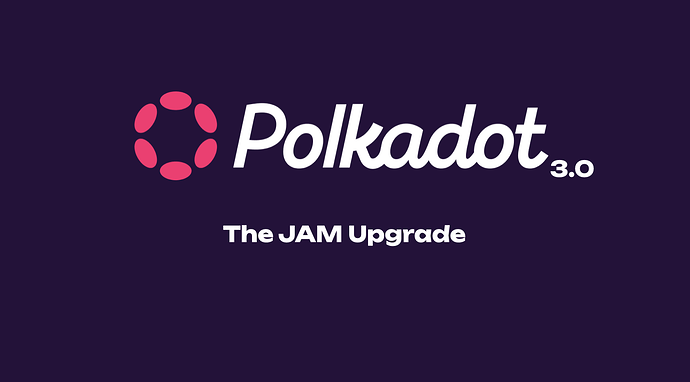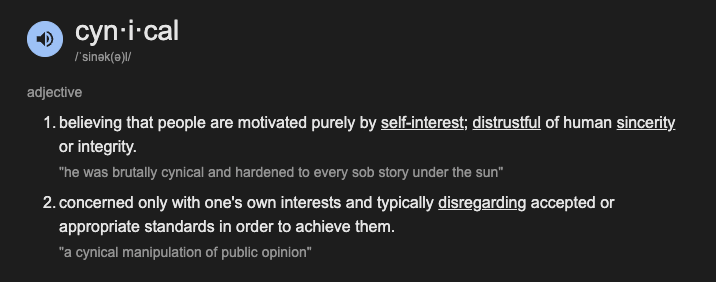The Polkadot 2.0 proposal clarified the ecosystem’s direction and improved communication between leadership and the community.
My previous forum post about renaming parachains to rollups also helped in using terminology that can ease the comparison with other ecosystems and technologies. I can see now multiple leaders speaking about rollups and slowly abandoning parachains (cynical rollup or Polkadot rollups).
Now is the time to do the same for the next major evolution of Polkadot: the JAM upgrade. This post aims to make clear that:
-
Polkadot is the brand.
-
JAM is the next iteration of the technology.
-
The Polkadot JAM upgrade will usher in the Polkadot 3.0 era.
-
DOT remains the token.
The community has already expressed reluctance to rebrand DOT to JAM in the Wish for Change referendum 1626. This opens the gates for further discussion of the future direction of Polkadot, and I am confident we can reach a consensus.
Current Situation
Polkadot is a strong brand. However, recent narratives have harmed its perception, especially those associating Polkadot with the word “dead.” The reality is, most people are still just beginning to understand Ethereum, let alone Polkadot. Framing Polkadot as “not dead” sets a negative precedent and plants unhelpful seeds in the minds of new crypto-curious individuals and the broader public. Instead, we must set a positive tone and position Polkadot as a vibrant, innovative, and beloved brand.
Over the past five years, considerable effort (both financial and communal) has gone into making Polkadot highly visible in the crypto space and beyond (Taxi in Berlin, Indy 500, Inter Miami, just to name a few). Continuing to strengthen the brand signals resilience and long-term vision. While decentralizing operations has been challenging, we are entering a phase where the system is starting to function more or less coherently. Polkadot is a resilient ecosystem, and the brand and DOT token should reflect that same resilience. In a space as emotionally volatile as crypto, perception matters, and the good thing is that it changes (very) quickly.
The Porsche Example
All brands and industries experience ups and downs. A great example is Porsche in the late 1990s. Despite developing some of the most technologically advanced cars of the era, like the 993 series with innovations such as twin-turbo engines, AWD, and automatic brake differentials, the company was near bankruptcy. Today, those same cars are valued as modern classics. But back then, Porsche needed a lifeline.
That lifeline came in the form of the 996 Boxster and Cayenne. These were not collector’s cars, but they sold well and saved the company. They enabled Porsche to keep innovating and stay relevant in a market with increasing competition.
I know, the comparison is not fair as Polkadot is blockchain stuff, but I hope the example is testimony that:
- Even the best technology can struggle without the right positioning.
- Hard times are temporary and often provide valuable lessons.
- Long-term success can overshadow past difficulties and even turn them into badges of honor.
- Porsche is a resilient brand that has survived the test of time, and with it the test of technological progress, people’s perception, generational changes, etc.
I truly believe Polkadot can be a resilient brand, and not only resilient tech.
The JAM Narrative
Another risk to the Polkadot brand has come from how JAM has been introduced, almost as a separate project, disconnected from Polkadot. This approach has caused confusion and concern among both the community and curious newcomers. Rather than splitting the narrative, we need to unify it.
It is becoming clear that a stable, production-ready JAM will not arrive overnight. And the longer this ambiguity continues, the more it affects confidence. Uncertainty and fragmented messaging are the enemies of adoption, innovation, and investment. They discourage newcomers from exploring the ecosystem and stall capital inflows. We need clarity.
Proposal Aims
This proposal seeks to formalize the following:
1. Communication
JAM is a technical upgrade to Polkadot, not a new project. It will replace the Relay Chain and related infrastructure with the JAM Chain, ushering in the Polkadot 3.0 era. While JAM is currently being developed separately for testing and will later support backward compatibility (e.g., for rollup chains), messaging must remain focused on Polkadot.
If Polkadot is considered a decentralized computer, then the JAM upgrade is a CPU replacement: swapping out the current CPU for a more powerful one, allowing for more generality and coherence.
2. Token
There will be no JAM token. DOT remains the network’s utility token and will continue to power Polkadot post-upgrade.
3. Branding
Branding should remain firmly centered on Polkadot. Presenting JAM as a standalone brand has created confusion. JAM is simply the next technological chapter for Polkadot.
Disclaimer
This post is intended for discussion purposes only. It reflects a personal viewpoint and outlines one possible direction for Polkadot as a brand and technological leader. My hope is to encourage serious, thoughtful conversation about where we are and where we are going. The ultimate goal is to align on a shared vision that could later be formalized in a Wish for Change referendum. A decision from the community is ultimate and sets a clear message for leaders and future communication and positioning of Polkadot.

